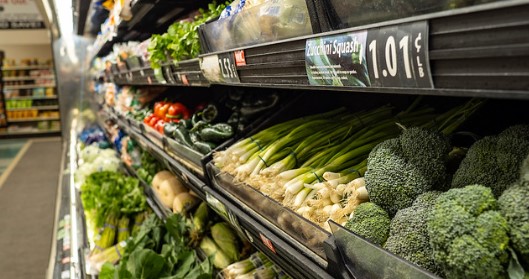
Agricultural News
The Journey of a Food Recall
Fri, 16 Sep 2022 12:16:31 CDT
 Before a food product reaches a shelf or freezer section of a grocery store, the manufacturing process transforms raw ingredients into consistent products for consumption. But what if the gourmet ice cream created from a blend of dairy products such as cream and condensed milk resulted in a food recall?
Before a food product reaches a shelf or freezer section of a grocery store, the manufacturing process transforms raw ingredients into consistent products for consumption. But what if the gourmet ice cream created from a blend of dairy products such as cream and condensed milk resulted in a food recall?
If there is reason to believe a product may cause consumers to become ill, a food producer will take the product off the market by issuing a recall with a company announcement. It is important for consumers to be aware of recalls because recalled foods may cause injury or illness, especially for people with weakened immune systems.
“The recall topic is very complex and there are many types of recalls initiated by different agencies,” said Ravi Jadeja, food safety specialist at the Robert M. Kerr Food and Agricultural Products Center.
What is the difference between a product recall and a product withdrawal?
A product recall is a removal or correction of a marketed product that the U.S. Food and Drug Administration considers to be in violation of the laws it administers and against which the agency would initiate legal action (seizure) if the company did not recall the product. However, a product withdrawal is a removal or correction, which involves a minor non-food safety issue that would not be subject to legal action by the FDA, or which involves no violation.
Examples include a normal stock rotation or product quality defects.
What are the FDA classes of recall?
The FDA has three very different and distinct classes of recall: Class I, II and III. In almost every case, the FDA will determine the classification of the recall.
A Class I Recall is for an emergency involving the removal from the market of product in which the consequences, immediate or long range, are life threatening and involve a direct cause-effect relationship. This calls for a full-scale public warning; either by the FDA or by the XYZ Company and 100% of the product is recovered from the market. The warning details the nature of the problem; identification by product name, brand name and lot number; name of manufacturer and specific actions to be taken by the consumers such as how to destroy the product or where to take the product.
A Class II Recall is one in which the consequences may be immediate or long-range, with possible or potential life threatening or hazardous health consequences. The FDA refers to temporary or medically reversible health consequences and would ask the product to be checked and recover less than 100% of the product. The FDA may issue a press release.
A class III Recall is routine in nature where consequences to life are remote or non-existent. The FDA need not be advised and if advised, rarely releases a press release.
If a recall is requested by the FDA, the following information will be required:
• Identity of the product involved
• Reason for the removal or condition and the date and circumstances under which the product deficiency or possible deficiency was discovered
• Evaluation of the risk associated with the deficiency or possible deficiency
• Total amount of such products produced and/or the time span of the production
• Total amount of such product estimated to be in the distribution channels
• Distribution information, including the number of direct accounts and where necessary, the identity of the direct accounts
• A copy of the company’s recall communication if any has been issued, or a proposed communication to be issued
• Proposed strategy for conducting the recall
• The name and telephone of company’s official who should be contacted concerning the recall
The discovery of bacteria, such as Salmonella, could result in a food recall. Another potential cause is the discovery of a major allergen which is not declared on the product label. Food recalls may happen because of the discovery of foreign objects in a product, such as metal or broken glass.
“Consumers can stay informed with recalls and public health alerts with the USDA Food Safety and Inspection Service,” said Jadeja. “Also, the Centers for Disease Control and Prevention updates food safety alerts and posts investigation notices for recent outbreaks.”
During a recall, all affected product is removed from store shelves, but what about the products already sold? A recalled food product with a germ contamination can contaminate kitchen surfaces, including the drawers and shelves in a refrigerator.
It’s important to throw out the food and clean the kitchen by sanitizing kitchen surfaces and cookware. In some cases, companies will offer a full refund for a contaminated product.
“FAPC offers various food safety trainings and one-on-one technical assistance to food companies to prepare their food safety and recall programs,” Jadeja said.
FAPC, a part of OSU’s Division of Agricultural Sciences and Natural Resources, helps to discover, develop and deliver technical and business information that will stimulate and support the growth of value-added food and agricultural products and processing in Oklahoma.
WebReadyTM Powered by WireReady® NSI
Top Agricultural News
More Headlines...




